The Microsoft Lumia 640 Review
by Brandon Chester on June 9, 2015 8:00 AM EST- Posted in
- Smartphones
- Microsoft
- Mobile
- Lumia
- windows phone 8
Windows Phone
To be honest, it has been quite some time since I’ve had a Windows Phone in my possession for any extended period of time. I had a Lumia 620 for a short period, and long ago during the era of Windows Phone 7 I had a Samsung Focus on a couple of occasions. While all of those devices offered very smooth experiences, there were too many issues with missing features at the OS level and a lack of applications which drove me back to Android. Since that time, Windows Phone has seen a number of updates, and many features that were omitted when I last used the platform have since been added. Because I don’t use a Windows Phone as a daily driver, I thought that this would be a good opportunity to give my thoughts on the state of the operating system, and whether or not I think it’s one that I could adopt for daily use.
The first thing I noticed when I got through the setup of the Lumia 640 is that the basics of Windows Phone actually haven’t changed that much since Windows 7.5 / 7.8. This isn’t a bad thing at all, as the live tiles interface was a refreshing change from rows of icons then, and it’s still one today. Obviously Android has widgets, but they don’t integrate near as well with app icons because there’s no standard for size, shape, or design like there is with live tiles. Unfortunately, live tiles also tend to be less useful than Android widgets in my experience, as many of them just perform the same function as the tiny little red app badge does in the corner of icons on iOS by showing you how many missed messages you have.
The ability to natively customize the lock screen is also something I enjoy. There’s no way to get weather info on the stock Android or iOS lock screens, but on Windows Phone it’s integrated with the native weather app, and even displays some pretty weather images as the lock screen wallpaper when you have it enabled. The notification capabilities of the lock screen are not as well developed as iOS and Android though. You can have counter notifications for five apps, and actual messages from a single app, but it pales in comparison to how Android and iOS both natively display notifications on the lock screen in the same manner as their respective notification drawers.
The Lumia 640 has Glance, the feature which continually displays a black screen with white text which you can look at to see notifications quickly. Unfortunately, Glance on the Lumia 640 seems to be more limited than on some other Windows Phones. You can’t set the weather or any other type of information beyond notification counters, so it basically acts as a low power lock screen that you can keep on for certain periods of time. Glance on Windows Phones with power sipping OLED displays and all the features enabled sounds pretty useful, but on the Lumia 640 I wouldn’t say it’s worth whatever battery drain is caused by keeping the LCD on all the time.
Action Center is a feature that solves the notification problems I had on Windows Phone. At this point it seems that every mobile OS has settled on an area for notifications which swipes down from the top. From a functional perspective, Action Center on Windows Phone is great. It integrates notifications and quick settings, and you can even change which settings it displays which puts it ahead of iOS and Android in terms of customization. There’s also a button to open the Settings app, and another button to clear all notifications which is helpful.
I do have a couple of issues with Action Center, although neither of them relate to functionality. My first issue is performance. At least on the Lumia 640, Action Center is incredibly stuttery when you’re opening and closing it, and it often freezes up in the middle of the animation for half a second or so as you’re opening it. Scrolling within it is also very sluggish and clearly sub 30fps. My second issue is with the animations themselves. The animations for opening and closing Action Center suffers from the same issue that pre-Lollipop Android did, which is that as you pulled down to open it the notifications were simply revealed from top to bottom as you pulled down. This doesn’t make any sense in the context of something that you are pulling. For example, when you open a drawer, the first contents you see will be those closest to the handle, not those that are farthest away at the back of the drawer. It’s just an oversight that misses the metaphor behind the design. What I find interesting is that this GIF from Microsoft’s support site shows how the animation actually should work, but on a real phone it’s completely different.
While Action Center fixes the issues with keeping track and keeping an eye on toast notifications, some of the other complaints I had about Windows Phone either haven’t been fixed or have been fixed in a less than optimal manner. I can think of no better example than the brightness settings. The availability of only three pre-defined brightness options has long been a criticism of Windows Phone. When Nokia was making Lumia phones and were making their own modifications to the OS they added their own brightness sliders in a separate section of the settings app. These have remained on Lumia devices to this day, but they don’t completely fix the problem of controlling brightness. While you can now set the value of the low, medium, and high brightness settings using individual sliders for each, those sliders do not each follow the same range of brightness values.
For example, if you set both the low and medium sliders to exactly the same spot, the brightness of the medium setting is not the same as the low setting. I understand why Microsoft is doing this, as you could otherwise have a situation where low was the brightest setting, and high was the lowest. However, I don’t understand why Microsoft cannot just put in a single brightness slider like every other operating system, including their own desktop operating system. It’s less confusing for the user to have a single brightness control, and it really has no disadvantages.
The one other thing that really bothers me about Windows Phone itself is the low cap that Microsoft has put on scrolling velocity. This has existed since Windows Phone 7, and from what I can tell it has not been changed at all despite the fact that modern SoCs are 10 to 20 times faster on the CPU side and have GPUs that are over 100 times faster than the Adreno 200 in the original generation of Windows Phones. While keeping the scrolling speed low allows Microsoft to make their OS look smooth even on lower end devices, it makes the entire operating system feel painfully slow. Whether you do a gentle swipe or a forceful one, your scrolling goes at the exact same rate, and when you’re scrolling through long music albums or webpages it feels like an eternity has gone by once you finally reach the bottom. The fact of the matter is that while Windows Phones still hold some smoothness advantages over Android devices in the low end part of the market, that gap is constantly decreasing, and while Android devices may have a bit of jank, they never feel slow.
While I have complaints about certain aspects of Windows Phone, I could name just as many things that don't make sense or have problems in Android and iOS. None of these mobile operating systems are even close to being perfect, and although I'd say the slow scrolling is a larger issue than anything on iOS or Android, I don't really have any issues with the core functionality of Windows Phone.
The App Situation
Moving beyond Windows Phone itself, there’s no way to discuss the platform without coming to the topic of third party app support. It is true that Windows Phone is not near as well supported as iOS or Android, but when it comes to popular services there are usually official or unofficial apps that you can make use of. The real issue that I’ve found is that the quality of apps is not as good as on Android, and not even remotely close to the quality of apps on iOS. I’ve found a lot of issues with poor performance, missing features, and just an overall lack of polish.
Two great examples of popular apps that do exist but have problems are Twitter and Flipboard. Both tend to have issues with animation and scrolling performance, and both have some interface oddities that I don’t understand. Twitter has those enormous buttons at the top, along with buttons at the bottom, and they eat up so much of the screen space that you can barely fit any tweets on the screen even after setting the font to the smallest setting. Flipboard is quite different from its Android and iOS counterparts, as it opts for an infinitely scrolling list instead of pages that flip. Both of the apps seem really mediocre, and it’s clear that they’re just an afterthought with little effort put into long-term support. Twitter hasn’t been updated since January, and it’s missing features like tweet quoting that have been introduced on other platforms since that time. This holds true for most of the official apps for popular companies and services that I've used. They're not given the same care and attention as Android and iOS apps.
When it comes to missing apps, there is one company who doesn’t make apps for Windows Phone, and it’s a deal breaker for me. That company is Google, and as of right now they only have one app on the Windows Store. That app is just their Google Search app for users who don’t want to be forced to use Bing in Internet Explorer, and it’s not very useful. Clearly Microsoft offers alternatives to Google services like Drive and Hangouts with apps like OneDrive and Skype, but that doesn’t do much to help users who already use the services within Google’s ecosystem. I get a lot of personal and work messages over Hangouts, and I have a lot of content stored on Google Drive. I’m even considering moving my photo collection to Google’s new Photos service, and that won’t be on Windows Phone either. There’s not much that Microsoft can do about this, and when they’ve tried to make apps themselves they’ve been blocked by Google. Company politics interfering with the user experience is a very sad thing, but the end result is that key apps I need are unavailable, and that ultimately makes the entire platform one I can’t use.
Windows Phone isn’t going anywhere, especially with Microsoft now being the producer of nearly every device. Unfortunately, that’s also part of the problem. I think Microsoft being the major Windows Phone manufacturer scares off other vendors, and Microsoft hasn’t iterated quickly enough on their own software and hardware. Windows Phone has no presence in the high end market, and Android has caught up in the low end market. I mentioned in my Moto E review that for a long time I recommended that users who wanted a cheaper smartphone go with Windows Phone over Android, because at the time the options on Android were janky, slow, and offered a poor experience. I can’t make that recommendation anymore, because the app gap is still here, while the experience gap in favor of Windows Phone is gone.


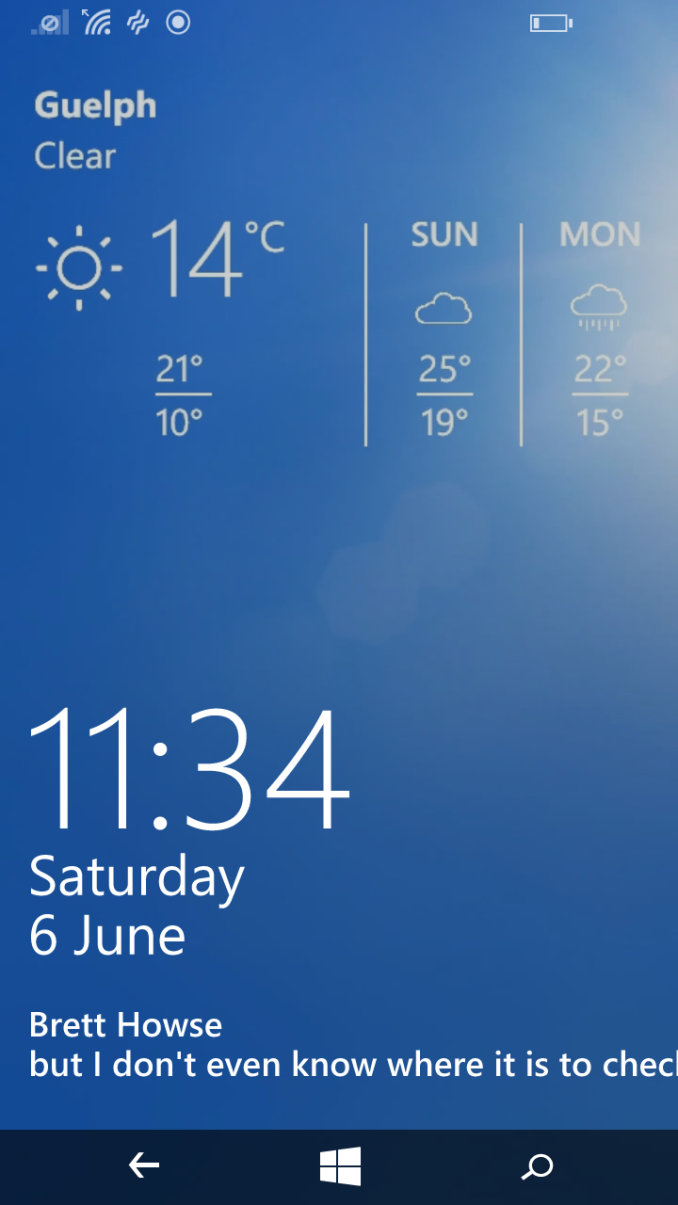
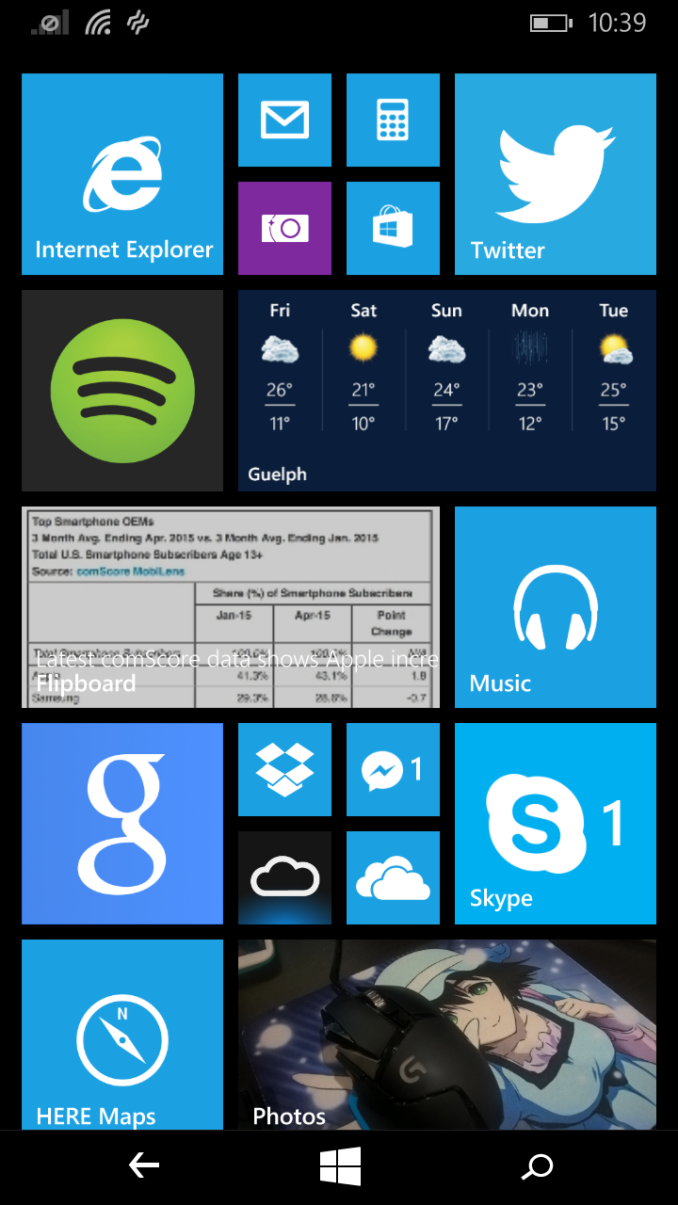
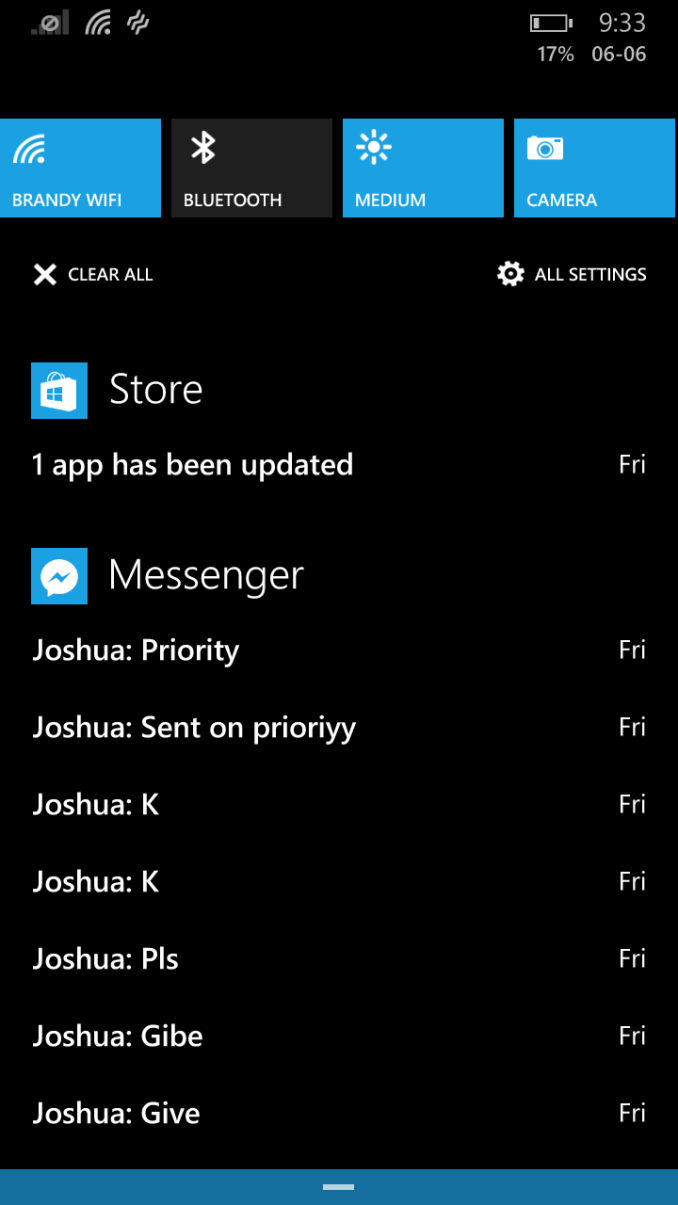

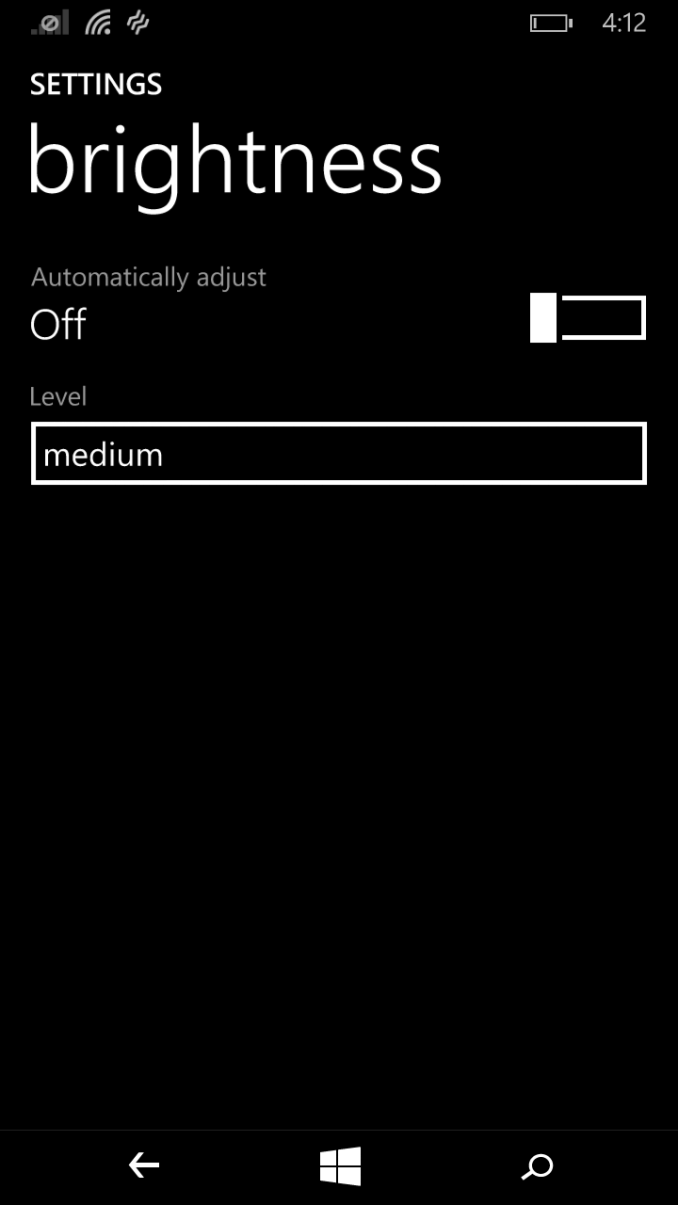
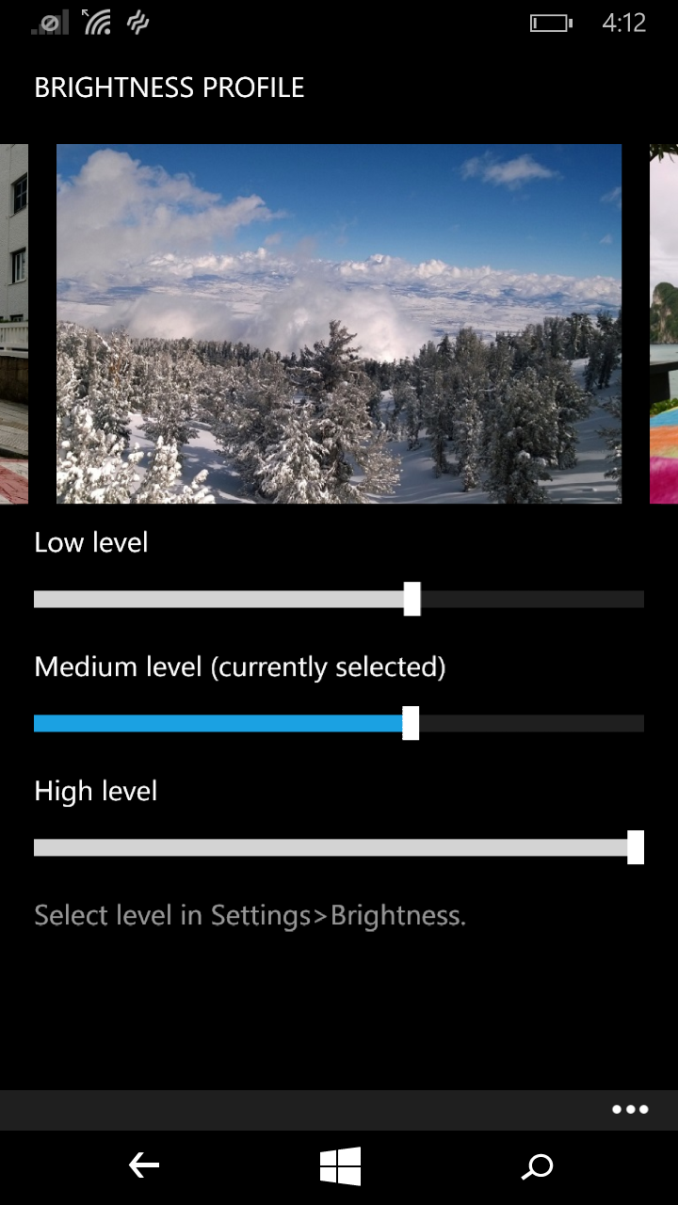
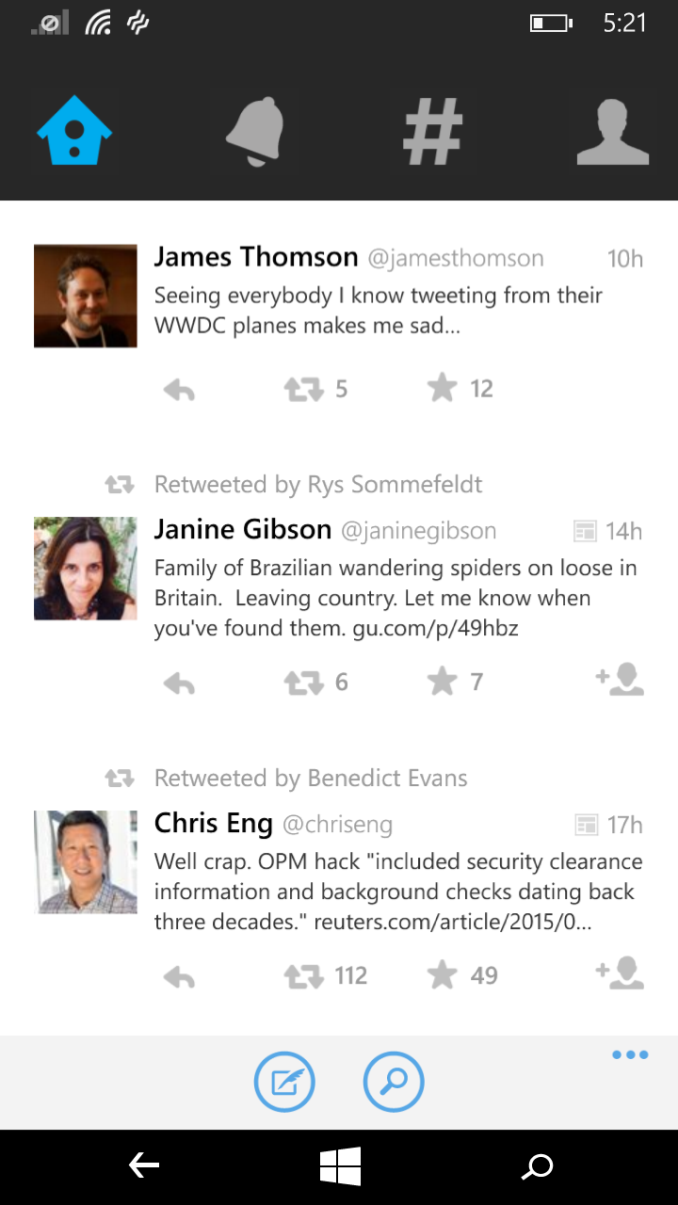
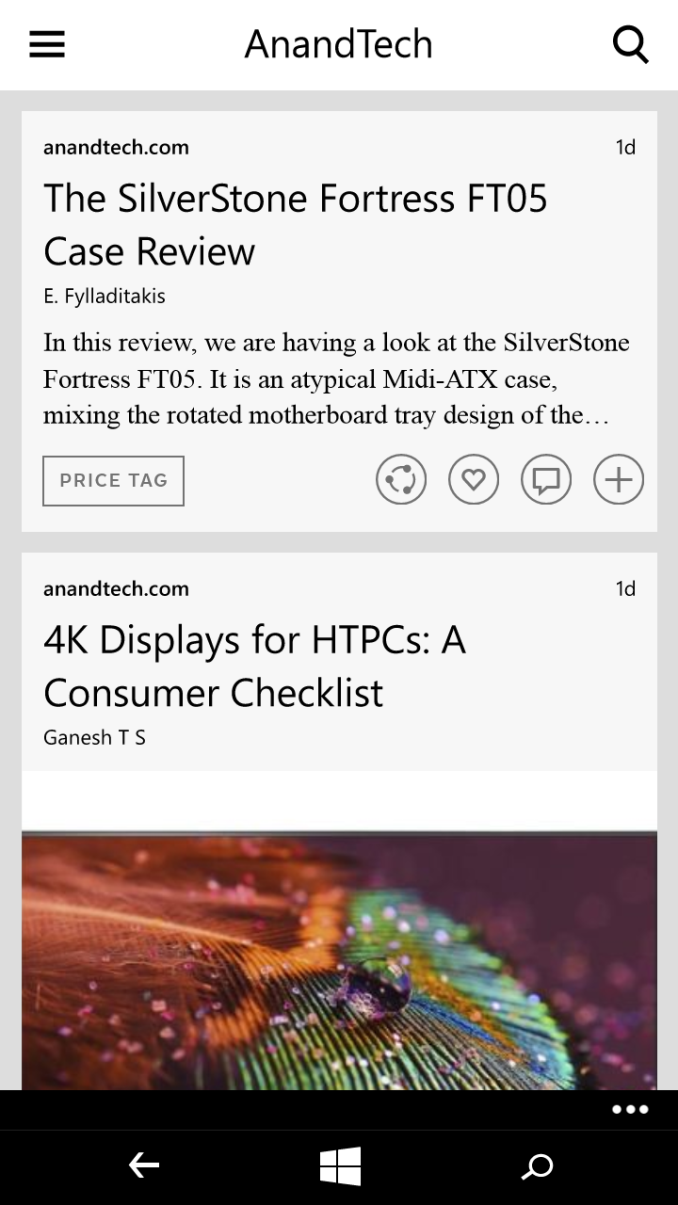








130 Comments
View All Comments
anomalydesign - Tuesday, June 9, 2015 - link
I agree with pretty much all of the assessment of the Windows phone ecosystem in this article. Aside from users looking for a low end smartphone, there is one other group I consistently recommend windows phones for; first time smart phone users, especially those who are technology averse.I've found the Windows phone interface is the easiest to pick up and start using with minimal foreknowledge. Beyond that, it requires the least maintenance over the long run (android trends to get bogged down/buggy if you don't stay on top of it, plus between Google, the manufacturer and the carrier, users end up with things like 3 different apps for looking at photos, or using Facebook. ios is more polished and consistent, but has a lot of Apple ecosystem "features" which deeply confuse people who don't already have (or understand) feature of Apple accounts like the iCloud or iTunes. The backup features especially seem to confuse people.
The lack of apps and Google services is a problem, but less so when you consider the phone for a group that is behind the curve. If someone is more active on pinterest, hangouts, etc, then a different phone would work better. But for the group I recommend this phone for, if they do have any accounts set up, they tend to be with Skype or Hotmail, either of which is all you need to get the phone going. This group is also likely to appreciate things like a decent camera and good build quality much more than gpu performance.
That's not a good market for Windows Mobile long-term, as first time smartphone users are a dwindling segment. But as of now, I'm very glad to be able to suggest out as an option.
Daniel Egger - Tuesday, June 9, 2015 - link
And I disagree. While the ecosystem really is not that good there's one *huge* advantage to WP 8.1 which is often forgotten: it provides exquisite worldwide offline navigation, public transport information and a number of high quality applications out-of-the-box and there's no crapware which cannot be uninstalled unlike on Android devices.For me the absence of the Google spyware is actually a big plus instead of a negative especially since it is close to impossible to run an Android device without Play Store. Also in favour for WP is the fact that business necessities (mail, calendar, notes, contacts) work much better out of the box than on Android, not quite as good as on iOS but for a fraction of the price; it's actually quite amazing which hoops one has to hop through to get CalDAV and CardDAV running (with DAVdroid and CAdroid) only to be greeted all the time with the warning that someone might be spying on you while at the same time Google is leeching personal information and sending it to its own servers...
pSupaNova - Tuesday, June 9, 2015 - link
"For me the absence of the Google spyware is actually a big plus instead of a negative especially since it is close to impossible to run an Android device without Play Store"Google Spyware the Intelligent ware that help you to collate information, plan journeys and make your life much easier.
Microsoft lost in the smartphone arena because their offering was too late and that tile interface to alien for users and the fact that they locked down their OS.
If you notice smartphone's are starting to be digital assistants to excel at this function they will have to know information about you, my bet is that users will trade 'spyware' privacy for the benefits ever increasing A.I (smarts) brings to them.
Daniel Egger - Tuesday, June 9, 2015 - link
"Google Spyware the Intelligent ware that help you to collate information, plan journeys and make your life much easier."Right. I have not found a single thing in Google that made my life easier compared to alternate offerings, privacy issues not even considered. For instance when it comes to journeys WP provides a much better service especially when taking the offline mode into account; Here Maps (WP only version) is quick and constantly updated and already has plenty of POIs built it plus it is very useful to pin tiles with important destinations for quick access to important destinations, Drive has outstanding routing capabilities, accurate traffic information (when online) and a very useful energy saving and driver friendly mode, Transit (and public transport planning in the other apps) works astonishingly well all around the globe and provides accurate pedestrian/public transport planning (especially when online it will also have and use current departure times to provide the best alternatives), City Lens is extremly useful to find nice places around you.
"If you notice smartphone's are starting to be digital assistants to excel at this function they will have to know information about you,"
B.S. I've used smartphones back in the times when the term smartphone wasn't even coined (they were called PDAs back then). The most important point is good synching capabilities (Android only syncs well with Googles' own services which are pretty much useless for professional and/or privacy concerned use) followed by applications with outstanding usability and both leave a lot to be desired out-of-the-box in Android -- funny enough the replacement application which Asus ships with their devices have much better usability than the Google built-ins.
pSupaNova - Tuesday, June 9, 2015 - link
Google's services offer a seamless fit across device types I like that I can order to go out for dinner on the desktop and get my calendar updated on my phone. That I Google Now knows my habits and will tell me if their are problems getting home from work.Your trying to make out as Nokia Maps is a killer feature which you can download on Android if you wanted anyway.
The advantages of Live traffic updates far out way using a Sat Nav on offline mode we our living in a ever connected world get with the program.
Android is the Windows of the smartphone world. Its more open has lots of hardware, highly configurable in both hardware and software.
" funny enough the replacement application which Asus ships with their devices have much better usability than the Google built-ins." - yes Google Android platform allows others to innovate.....
Daniel Egger - Tuesday, June 9, 2015 - link
"Google's services offer a seamless fit across device types I like that I can order to go out for dinner on the desktop and get my calendar updated on my phone."Yes, that's called syncing. And Android devices are horrible syncers when services other than Google should (or need to) be used. That's a clear no-go for corporate and privacy concerned uses.
"Your trying to make out as Nokia Maps is a killer feature which you can download on Android if you wanted anyway."
No you can't. Here Maps on Android and iOS is a incomplete and halfassed solution requiring sign-up.
"The advantages of Live traffic updates far out way using a Sat Nav on offline mode we our living in a ever connected world get with the program."
No, it doesn't. Here Maps has exceptionally good live traffic updates when online. But you're obviously not coming around a lot if you don't see a problem streaming maps around the globe. Roaming charges can be horrific...
"Android is the Windows of the smartphone world. Its more open has lots of hardware, highly configurable in both hardware and software."
Again B.S., there're very few Android devices which work nicely out-of-the-box. Most of the devices are bloatware ridden and thus provide an inferior experience and abysmal battery life and often they're already dead right from the factory as they'll rarely see any updates which is a must due to the terrifying amount of security problems. There're only few exceptions mostly provided by Google itself and manufacturers for Google like Motorola, Samsung and Asus; but thanks to Intel even the custom rom approach is somewhat thwarted in certain price regions...
I've yet to see an Android device providing an enjoyable experience and acceptable battery life without wasting much time with tinkering. My Moto E (2nd gen) became pretty much usable after installing an unofficial CM12.1 ROM and freezing of all Google services -- over 9 days of battery life are more than okay nowadays, previously with (almost stock Android) Motorola software (both Kitkat and Lollipop) the battery was dead after no more than 2,5 days.
I do have plenty of other Android devices at my disposal if you need more input.
WP devices on the other hand do not require any tinkering and yet offer a much better general experience and battery life as well as nice apps without paying through your nose with your personal data.
iPhones do, too, however those are obscenely expensive compared to WP phones without providing any massive benefits worth the markup.
pSupaNova - Wednesday, June 10, 2015 - link
I have an Sony Xperia Z3 Compact & the battery life and out of the box experience are brilliant.I have not had to install a Custom Rom for years, that's for people with too much time on their hands.
if you want dumb phone battery life then why are you buying a Smartphone?
Windows Phone is so trash that you can't even browse the files on the system when you plug it into your PC.
With windows phone its hard to get it talking with your smart TV or NAS.
File Managers are also a joke. I tried windows phone 7 and saw how Microsoft thought they could lock you down like Apple and knew instantly that they would lose to Android.
Android is fine at synching to other services I have use yahoo mail, EverNote & OneNote with no problems also I have my photos from my phone camera and whatsapp automatically sync with both Amazon & Google Photos so I never lose a photo, I think you are spreading lies.
Windows Phone will never catch up to Android because it's has not Got the developers or consumers mindshare and this is coming from some-one with over two decades of professional Windows Development experience.
Windows Tablets on the overhand do have a chance.
jakoh - Thursday, June 11, 2015 - link
WP7, lol, was terrible. Its like saying i hate android because of android 2.3 (which was still pretty popular a couple of years ago.BTW, there is a files app on WP8.
jakoh - Thursday, June 11, 2015 - link
If its worth anything "exquisite worldwide offline navigation" is now available on android and IOS, Here Maps.I like to mention that I would switch to Android, if I can select the apps that run in the background (please dont offer killing apps). Also Google on Tap should be offered as something parents would get to put on their childrens phone.
Alexvrb - Tuesday, June 9, 2015 - link
If you lock yourself into somethng that is platform-limited like Hangouts or even worse iStuff that's not MS' fault. Skype and FB Messenger for example run on just about everything. Same with Kindle, Dropbox, most MS services, etc. I tend to avoid services that don't have broad platform support. It's just retarded to say "Oh I can't buy or recommend that phone because I let myself become dependent on some proprietary lockware".